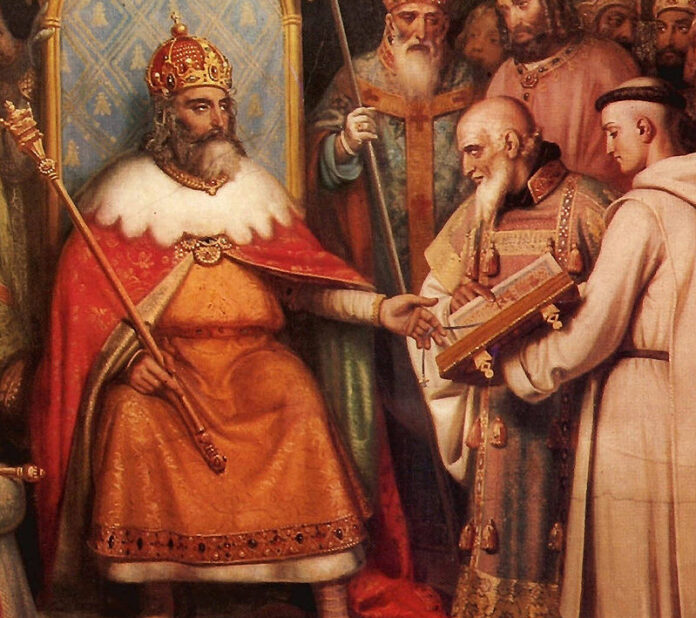Charlemagne, also known as Charles the Great, was a towering figure in medieval European history, renowned for his military conquests, political achievements, and cultural patronage. Beyond his iconic status, here are three fascinating facts about Charlemagne that may surprise you.
Multilingualism and Love for Learning
Despite being born in the early Middle Ages, Charlemagne possessed a remarkable aptitude for languages and a deep appreciation for learning. He was fluent in multiple languages, including Latin, his native Frankish tongue, and even some Greek. Charlemagne’s passion for education and scholarship led him to establish a palace school at his capital in Aachen, where he surrounded himself with scholars and intellectuals from across Europe. Under his patronage, the Carolingian Renaissance flourished, fostering a revival of learning, art, and literature that laid the groundwork for the medieval intellectual tradition.
Imperial Coronation and Charlemagne’s Legacy
In 800 AD, Charlemagne achieved a historic milestone when he was crowned Emperor of the Romans by Pope Leo III in Rome. This event marked the revival of the Western Roman Empire and solidified Charlemagne’s status as the preeminent ruler of Western Europe. Charlemagne’s imperial coronation signaled the beginning of the Holy Roman Empire, which endured for over a millennium as a dominant political and religious force in Europe. His legacy as an imperial ruler, lawmaker, and unifier of Christian Europe continues to reverberate through history, earning him the title of the “Father of Europe” and cementing his place as one of the most influential figures of the Middle Ages.
Charlemagne’s Height and Physical Appearance
Contrary to popular belief, Charlemagne was not an exceptionally tall man by modern standards. Historical records suggest that he stood around six feet (1.83 meters) tall, which was above average for his time but not towering compared to his contemporaries. However, Charlemagne was known for his imposing presence, commanding demeanor, and physical vigor, which earned him the respect and admiration of his subjects and allies. His long, flowing beard became an iconic symbol of kingship and authority, further enhancing his image as a powerful and charismatic ruler.

